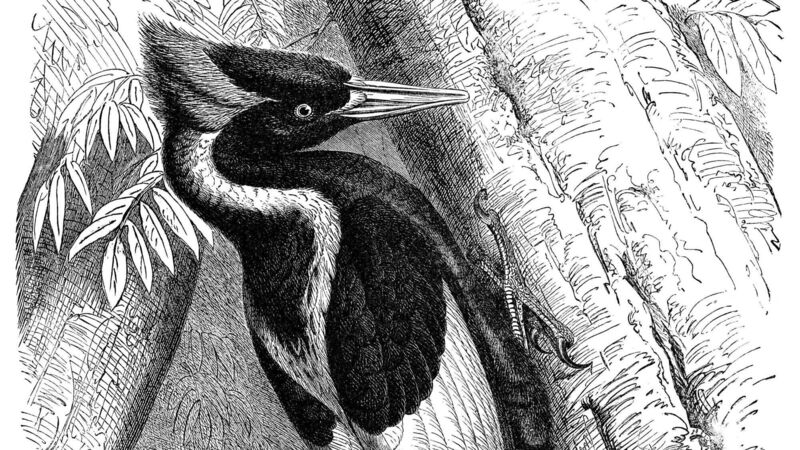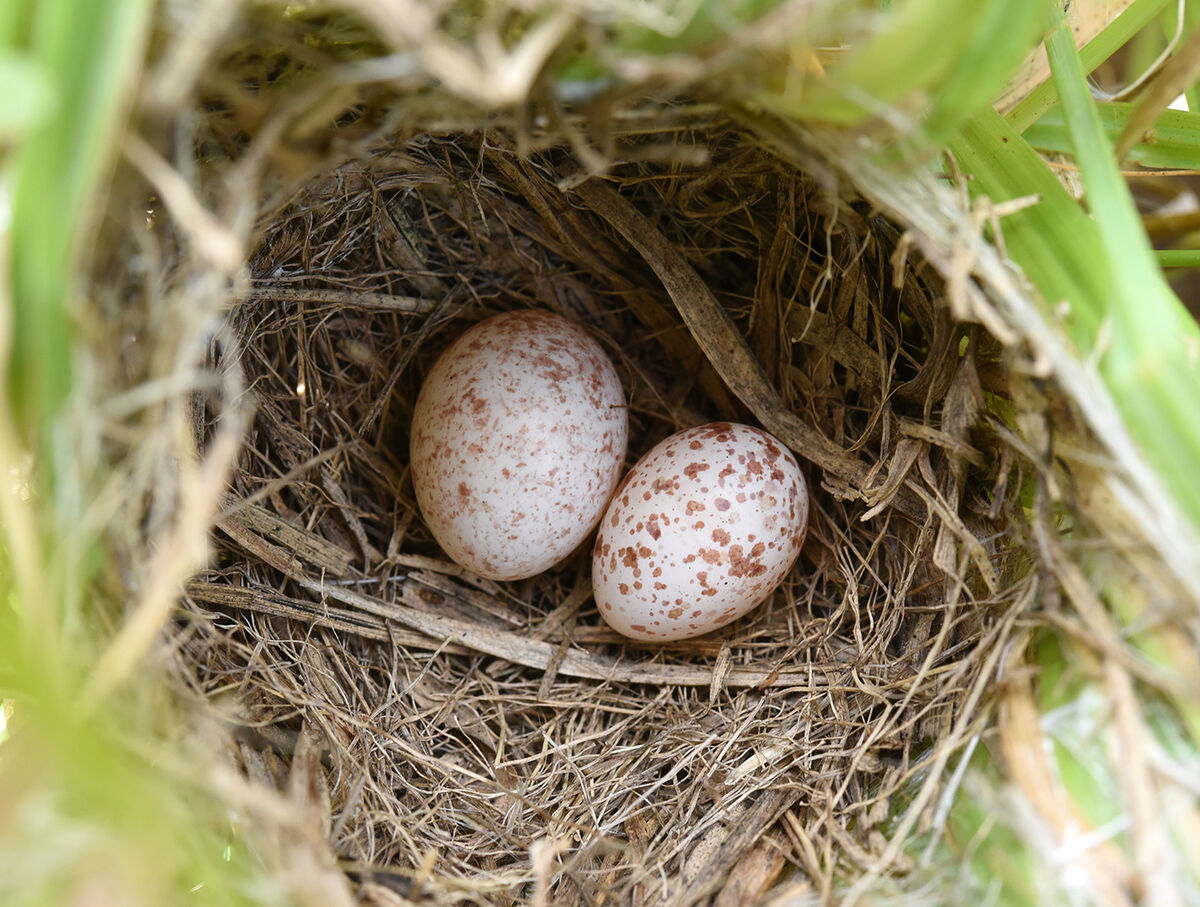Back from the dead? Elusive ivory-bill woodpecker not extinct, researchers say

'People who are into birds are fascinated by them. Ivory bills couldn’t care less, though. They hate all people.'
In terms of elusiveness, it is the Bigfoot or Loch Ness monster of the bird world, so rare and undetectable that the US government declared it extinct last year. But the ivory-bill woodpecker is, in fact, still alive and pecking in the forests of Louisiana, a team of researchers has claimed.
A series of grainy pictures and observations of the bird, which had its last widely accepted sighting in 1944, show that the scrupulously furtive woodpecker is still holding on in the swampy forests of the US south, according to the team’s new research, which is yet to be peer-reviewed.
A three-year quest to find the woodpecker involved scientists trudging through an undisclosed portion of Louisiana woodland to observe the bird and take audio recordings. Unmanned trail cameras, set up to take pictures on a time-lapse, and a drone were used to capture photos of the creature.
Steve Latta, the director of conservation at the National Aviary in Pittsburgh who led the effort, said each member of the team had encounters with the ivory-billed woodpecker and often heard its call, which has been described like hearing a child puff into a tin trumpet.
Latta himself saw the bird fly upwards in front of him, showing the distinctive white edges to its wings. “It flew up at an angle and I watched it for about six to eight seconds, which was fairly long for an ivory-billed woodpecker,” he said. “I was surprised. I was visibly shaking afterwards.
The size and the markings of the bird captured in the photos is strong evidence that it is not another woodpecker, such as a pileated or red-headed woodpecker, Latta said. “It reinforced to me that, yes, this bird does exist and left me feeling a sense of responsibility to protect it for the future,” he said.
Ivory-billed woodpeckers were once relatively common, stretching from the Carolinas through the southeast US to Texas. They were, or are, the largest woodpeckers in the US, with the males sporting a distinctive red crest on their heads. They enjoy feasting on insects that accumulate in the bark of recently deceased trees.
Their numbers started to drop sharply in the 19th century due to human interference with their habitat and overhunting, with their scarcity spurring collectors to hunt them further as valuable specimens. They were also eaten by poverty-stricken people of the time who turned to devouring the woodpecker, wild turkeys, gopher tortoises and other wildlife.
With just a few of the birds occupying largely inaccessible forests, confirmed sightings, let alone clear pictures, became almost impossible. Last year, the US Fish and Wildlife Service (FWS), after years of listing the woodpecker as critically endangered, declared the species extinct.
“No one has held a camera and got a picture of one in years because it’s a scarce bird in tough swampy habitat and they don’t want people close to them because they’ve been shot at for 150 years,” said Geoffrey Hill, a biologist at Auburn University who took part in another, largely frustrating, trip to find the bird in Florida in 2005.
“They have better eyes than we do, they are high in the trees and actively flee people. They aren’t great thinkers but they have developed a pretty simple strategy to avoid people.”
Hill said Latta’s research was “very interesting” and that he thought it likely that the bird pictured is indeed an ivory-billed woodpecker. He added that the FWS was premature to decide the species was extinct and that several dozen could still be holding on in forests across the south.
“Some people cannot believe a bird can defy documentation by modern humans because we have such dominion over nature but it is endlessly interesting because if it has done that, it’s one pretty impressive bird,” Hill said.
“People who are into birds are fascinated by them. Ivory bills couldn’t care less, though. They hate all people.”
Elsewhere, researchers have finally shed light on the century-old mystery of how some birds can mimic the eggs of several other species in order to trick them into raising their young.

Genetic research by an international team led by Professor Claire Spottiswoode from the University of Cambridge’s Department of Zoology and the FitzPatrick Institute of African Ornithology, University of Cape Town, and Professor Michael Sorenson at Boston University reveals that female cuckoo finches inherit their ability to mimic the appearance of their hosts’ eggs from their mothers, via the female-specific W chromosome – comparable to the male-specific Y chromosome in humans.
According to the scientists, this maternal inheritance allows cuckoo finches to sidestep the risk of inheriting the wrong mimicry genes from a father raised by a different host.
It has also allowed distinct lineages of cuckoo finch females to evolve specialised egg mimicry of several different host species.
The researchers suggest such mimicry tricks host parents into accepting a parasitic egg as their own rather than throwing it out of the nest, and so has been crucial to the success of these African birds.
However, they believe this long-established system of maternal inheritance may come back to haunt the cuckoo finches.
Dr Spottiswoode said: “Parasites face a daunting challenge because some host species have in return evolved an astonishing diversity of egg colour and pattern ‘signatures’, that help hosts to distinguish their own eggs from parasitic mimics.”
The study, published in PNAS, focused on the genetics of egg mimicry in the cuckoo finch, a species which adopts a brood-parasitic lifestyle and exploits many species of warbler across Africa.
- The Guardian and Press Association






